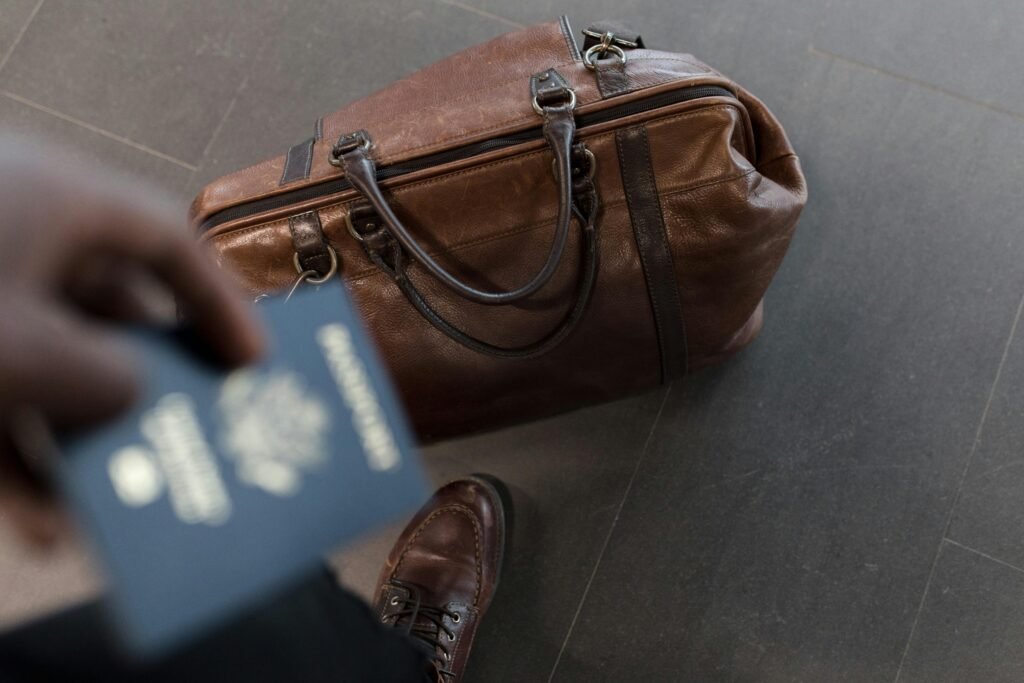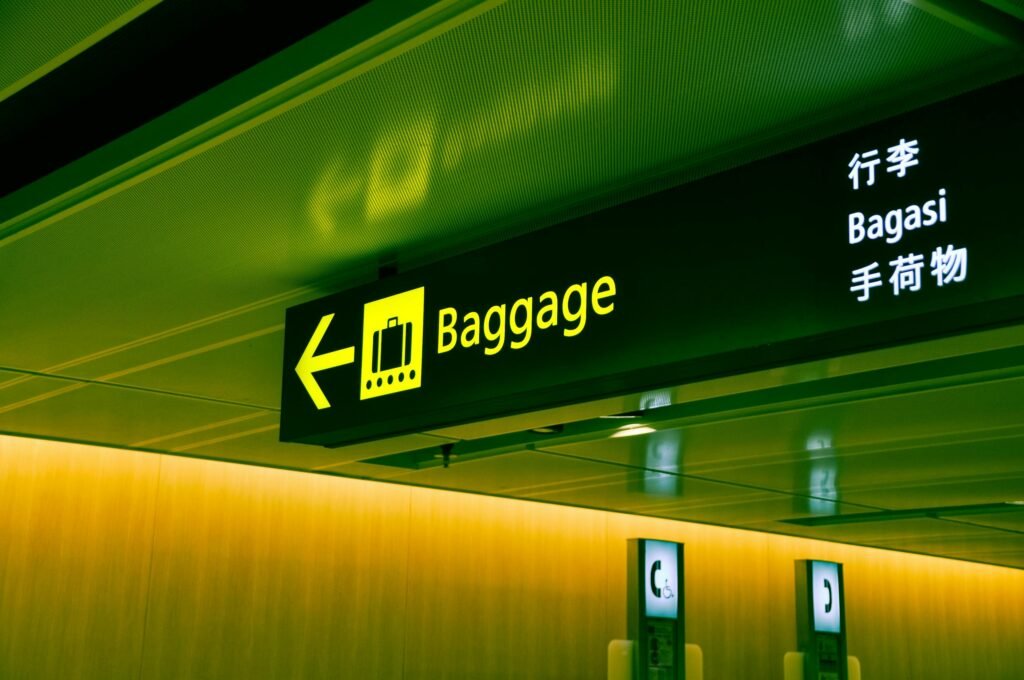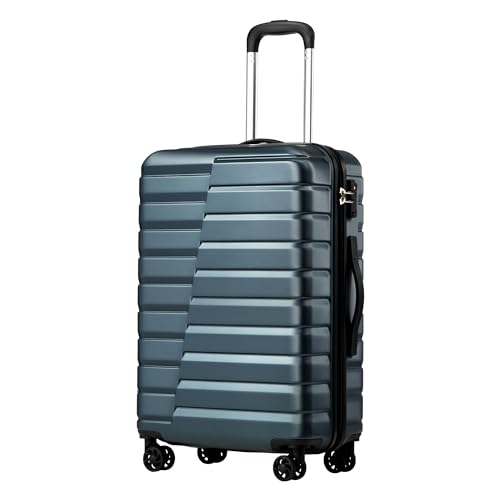Understanding Airport Security Protocols
Airport security protocols serve as a critical component of the overall travel experience, ensuring that passengers and crew members can safely embark and disembark from flights. These measures are implemented primarily to safeguard against potential threats to aviation safety. Security checks aim to identify dangerous items that may pose a risk to passengers or the aircraft, thus maintaining a secure environment for all individuals within the airport premises.

Typically, airport security involves the screening of baggage and passengers through various methods, including x-ray machines, metal detectors, and sometimes even full-body scanners. Items that are often restricted include sharp objects, such as knives and scissors, as well as liquids that exceed specified volume limits. The regulations, however, can vary across different countries and airports, necessitating travelers to familiarize themselves with the specific guidelines applicable to their travel destination.
In the United States, for example, the Transportation Security Administration (TSA) dictates its policies, which include the prohibition of liquids larger than 3.4 ounces in carry-on luggage, while many international airports enforce different liquid restrictions. Likewise, travelers should also be aware that electronic devices may need to be placed separately during screening in some locations. Hence, remaining informed about airport security protocols can significantly impact the efficiency of a traveler’s journey.
Moreover, the emergence of new security challenges sometimes leads to evolving regulations, emphasizing the need for passengers to stay updated. Knowing what will occur during the screening process can alleviate anxiety and streamline airport procedures. It is prudent for travelers to review the latest updates from official airport and travel organization websites before embarking on their journeys. By adequately understanding airport security protocols, travelers can foster compliance while enjoying a smoother travel experience.
Packing Smart: What to Bring in Your Carry-On
Efficient packing for your carry-on is a vital step towards a smooth airport security experience. To facilitate this process, one must carefully consider the items included in their hand luggage. Prioritizing the correct essentials will not only save time during the security screening but also ensure that personal belongings are readily available when needed.
When it comes to liquids, familiarity with the Transportation Security Administration (TSA) guidelines is essential. Liquids must be packaged in containers of 3.4 ounces (100 milliliters) or smaller, all fitting comfortably into a single quart-sized, clear plastic bag. This rule applies to various substances such as toiletries and beverages. By consolidating your liquids, you can expedite the screening process, as removing the bag from your carry-on allows for simpler inspection. Additionally, it’s advisable to pack items such as deodorant, toothpaste, and any other essentials that fall in the liquid category with ease of access in mind.
Electronics are another significant category that requires attention. Laptops, tablets, and larger devices must typically be removed from your bag during screening. Therefore, placing these items separately in your carry-on will not only streamline the procedure but also safeguard them from potential damage during transport. Consider utilizing a dedicated compartment in your bag, ensuring that you have swift access when needed at the security checkpoint.
Furthermore, personal items such as travel documents, boarding passes, medication, and valuables should be readily available. Keep these essential items in a designated pocket or at the top of your bag to minimize delays. A thoughtful approach to packing your carry-on can significantly ease the airport security process, allowing travelers to move with greater efficiency through the screening stage.
Choosing the Right Clothing for Smooth Screening
When navigating airport security, the choice of clothing can have a significant impact on the overall experience. Passengers often underestimate how their attire can affect the screening process, making the selection of appropriate clothing essential for a swift passage through security checkpoints. To prevent unnecessary delays and enhance convenience, travelers should consider several factors when preparing their clothing for air travel.
Firstly, wearing easy-to-remove shoes is highly recommended. Footwear that requires less effort to take off not only speeds up the screening but also reduces the chaos that often ensues at security lines. Slip-on shoes, sandals, or shoes with minimal laces can facilitate a smoother process, allowing travelers to maintain a steady flow while navigating through checkpoints. Conversely, opting for shoes that demand excessive tying or complicated buckling can lead to delays, especially during busy travel periods.
Additionally, minimizing accessories such as belts, chunky jewelry, and large bags is prudent. These items often trigger additional scrutiny as they may need to be separately examined during the screening. To streamline the experience, travelers could select simpler accessories or, if possible, leave them at home. Furthermore, choosing clothing made from fabrics that do not set off alarms is another effective strategy. Sticking to cotton or wool materials, as opposed to those with metallic components, can help in avoiding unnecessary alarms, which can prolong the security process.
In light of these recommendations, taking the time to choose clothing wisely can lead to a more efficient airport security experience. By prioritizing comfort and practicality in attire, travelers can navigate airport security with greater ease, ensuring a smoother journey ahead.
Utilizing TSA PreCheck and Other Expedited Programs
Traveling through airport security can often be a cumbersome process, but by utilizing expedited programs such as TSA PreCheck, passengers can significantly reduce their wait times. TSA PreCheck, a program initiated by the Transportation Security Administration, provides eligible travelers with a streamlined security screening experience. Participants in this program enjoy the benefit of accessing dedicated lanes and are not required to remove shoes, belts, or light jackets during the screening process.
To qualify for TSA PreCheck, travelers must apply and undergo a background check. The application process can be initiated online, where applicants provide personal information and schedule an in-person appointment at a nearby enrollment center. Upon approval, participants receive a Known Traveler Number (KTN) that must be added to airline reservation systems for their flights. The cost of applying is currently $85, which covers a five-year membership.

In addition to TSA PreCheck, there are several other expedited screening programs available to travelers globally. Global Entry is one such program, designed primarily for international travelers entering the United States. Similar to TSA PreCheck, Global Entry membership allows expedited clearance through customs and immigration upon arrival. The application for Global Entry also requires an interview and a fee, but it includes benefits from TSA PreCheck as well.
Other countries have developed their own expedited programs, such as Canada’s NEXUS and the United Kingdom’s Registered Traveller scheme. These programs are often reciprocal, allowing travelers to benefit from streamlined processes in partner countries. Before your next trip, consider looking into these options, as they can help you navigate airport security more efficiently, saving time and reducing travel-related stress.
Time Your Arrival at the Airport
Arriving at the airport in a timely manner is crucial for a smooth and stress-free travel experience. Understanding the importance of timing can significantly reduce the likelihood of delays, missed flights, and heightened anxiety levels. A general rule of thumb suggests arriving at the airport at least two hours prior to a domestic flight and three hours ahead of an international flight. However, these guidelines may vary based on specific circumstances.
One important factor to consider is the airport’s traffic conditions. Airports located in urban areas often experience heavy traffic, particularly during peak hours such as early mornings or late afternoons. Monitoring local traffic reports or utilizing navigation applications can provide useful insights into current conditions, allowing travelers to adjust their schedules accordingly. For instance, if a significant event is occurring nearby, or if there are reports of construction, it might be wise to factor in additional time when planning your departure for the airport.
Additionally, peak travel periods, such as holidays or summer vacation seasons, often lead to overcrowded terminals and longer security lines. In such scenarios, arriving earlier than the recommended timeframe could enhance overall airport experience. Airlines may also suggest specific arrival times based on their operations and the anticipated passenger volume during those busy times.
Organizations like the Transportation Security Administration (TSA) provide updates on security wait times on their websites, which can aid in determining the most suitable arrival time. By being aware of flight times, potential delays, and anticipated crowds, travelers can more effectively time their arrival at the airport. The right approach to timing not only minimizes stress but also prepares one to enjoy the travel experience from the moment the journey begins.
Navigating Security Lines: Tips for Efficiency
When preparing to navigate airport security lines, efficiency is paramount. One of the first steps is to choose the right line. Pay attention to the number of bins available and the speed of passengers being processed. Lines that are less staffed might appear shorter but can often take more time if agents are slow. Observing the personnel’s efficiency and how well passengers are organized can provide insight into which line will move fastest.
Remaining alert and prepared is also crucial to ensuring a smooth experience. Before you reach the security checkpoint, it’s advisable to have your identification and boarding pass easily accessible in your pocket or bag. Additionally, consider donning easily removable shoes and avoiding excessive accessories, as these can slow down the screening process. By keeping your personal items organized, you can minimize the number of items that need to be placed in bins during screening.
Unexpected delays can be frustrating; however, maintaining a calm demeanor can alleviate stress. If you find yourself stuck in a slow-moving line, take a moment to breathe and stay composed. Informing security personnel if you have a tight connection can sometimes prompt expedited processing. Furthermore, utilizing mobile apps designed to provide real-time updates about security wait times can empower travelers to make informed decisions regarding their route through the airport.
In conclusion, effectively navigating airport security lines is achievable with the right strategies. From selecting the most efficient line to staying prepared, every step counts toward a more seamless travel experience. Being aware of the situation and knowing how to handle delays calmly will not only benefit your trip but encourage a smoother experience for fellow travelers as well.

Handling Special Circumstances: Families, Seniors, and Disabled Travelers
Navigating airport security can often be a daunting experience, particularly for special traveler demographics such as families with young children, seniors, and individuals with disabilities. Each group faces unique challenges when preparing for security screenings. However, with a few tailored strategies, these travelers can ensure a smoother experience at checkpoints.
Families traveling with children should plan ahead to minimize stress during security procedures. It is advisable to explain the screening process to children before arriving at the airport. Parents can also streamline the process by organizing their belongings into easily accessible bins, separating items such as toys, electronic devices, and liquids. Additionally, consider using family lanes if available, as these often provide a more accommodating environment for young travelers. Being ready to assist children with removing shoes and jackets will further expedite the process.
Seniors may also have specific considerations when approaching security. Individuals over the age of 75 can opt for expedited screening sometimes offered at certain airports, which may include alternative methods for checking mobility aids or conducting a pat-down. It is prudent for seniors to arrive at the airport earlier than usual, allowing ample time to navigate potential obstacles and avoid rushing. Carrying necessary medical documentation for any assistive devices can further smoothen the process.
For disabled travelers, familiarity with the airport’s accessibility options can greatly enhance their experience. Most airports have dedicated lanes for those requiring assistance, and staff members are trained to provide support throughout the security screening. Travelers are encouraged to inform the TSA in advance regarding any special assistance needs. It is valuable to carry essential items like medications or mobility aids in easily reachable areas, making them readily available for inspection.
By implementing these strategies, families, seniors, and disabled travelers can navigate airport security with greater ease, ensuring a more pleasant start to their journey.
Post-Security: What to Do Next
Once you have successfully navigated through the airport security checkpoint, you may find yourself with some extra time before your flight. This period can be utilized to enhance your travel experience, making your waiting time more enjoyable and productive. Airports are equipped with a wide array of amenities and services designed to cater to travelers in transit.
The first consideration is dining. Many airports feature diverse culinary options ranging from quick bites to sit-down meals. Depending on your preferences, you can indulge in local cuisine orwell-known fast-food chains. Take note of the airport’s directory, often available through digital kiosks or mobile apps, which will guide you to nearby restaurants according to your tastes and time constraints.
If shopping is more your style, most terminals boast a variety of retail stores offering everything from travel essentials to luxury goods. This can be an excellent opportunity to secure souvenirs or gifts for loved ones. It is advisable to check the shops’ operating hours to ensure that they will still be open before your boarding time.
For those seeking a moment of relaxation, many airports now feature lounges, meditation areas, or quiet zones, where passengers can unwind away from the hustle and bustle. If you are traveling with a membership to a designated lounge or a credit card that offers lounge access, this can be a perfect way to recharge. Alternatively, simply finding a quiet bench to read or enjoy some music can also be refreshing.
Ultimately, how you spend your time post-security varies according to your preferences and needs. Whether you choose to dine, shop, or relax, making the most of your time in the airport can positively influence your overall travel experience.
Final Security Tips and Reminders
As travelers prepare for their journeys, adhering to essential airport security measures ensures a smoother experience at security checkpoints. Remembering key practices can significantly minimize delays and enhance overall travel efficiency. First and foremost, always arrive at the airport early. This allows ample time for check-in, security screening, and any unforeseen complications. Most guidelines recommend arriving at least two hours prior to domestic flights and three hours for international flights.
In addition, familiarize yourself with the Transportation Security Administration (TSA) guidelines on prohibited items. This includes liquids over 3.4 ounces, sharp objects, and other hazardous materials. Packing based on these regulations helps to prevent the inconvenience of needing to discard items at security. When preparing your carry-on, prioritize organization; utilize packing cubes or separate compartments for liquids, essential documents, and electronic devices to facilitate an efficient screening process.
Also, consider wearing easily removable shoes and clothing to expedite your passage through security. Footwear that can be swiftly taken on and off will help you move through the security line more rapidly. Moreover, be mindful of your carry-on electronics; laptops and larger devices typically need to be removed and placed in separate bins. Keep your boarding pass and identification ready upon approaching the security officer to streamline processing. Being prepared not only aids in lessening your stress but also contributes to the overall efficiency of the screening process.
Finally, always stay informed about changes in security protocols which may arise unexpectedly due to various factors including health advisories or heightened threat levels. By maintaining awareness, adhering to the necessary precautions, and utilizing these essential airport security tips, travelers can navigate through the security process quickly and effectively, ensuring a more pleasant start to their journey.



